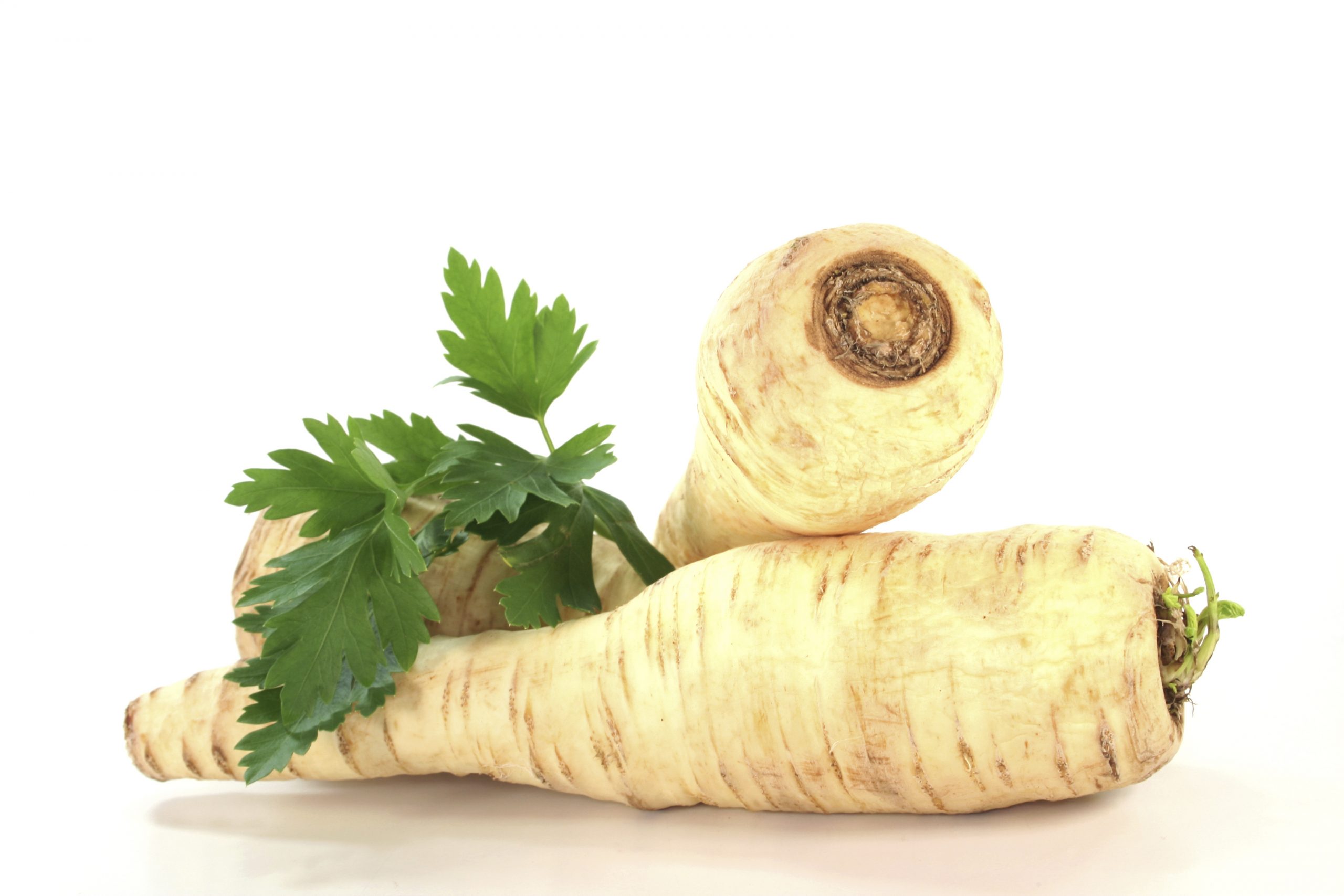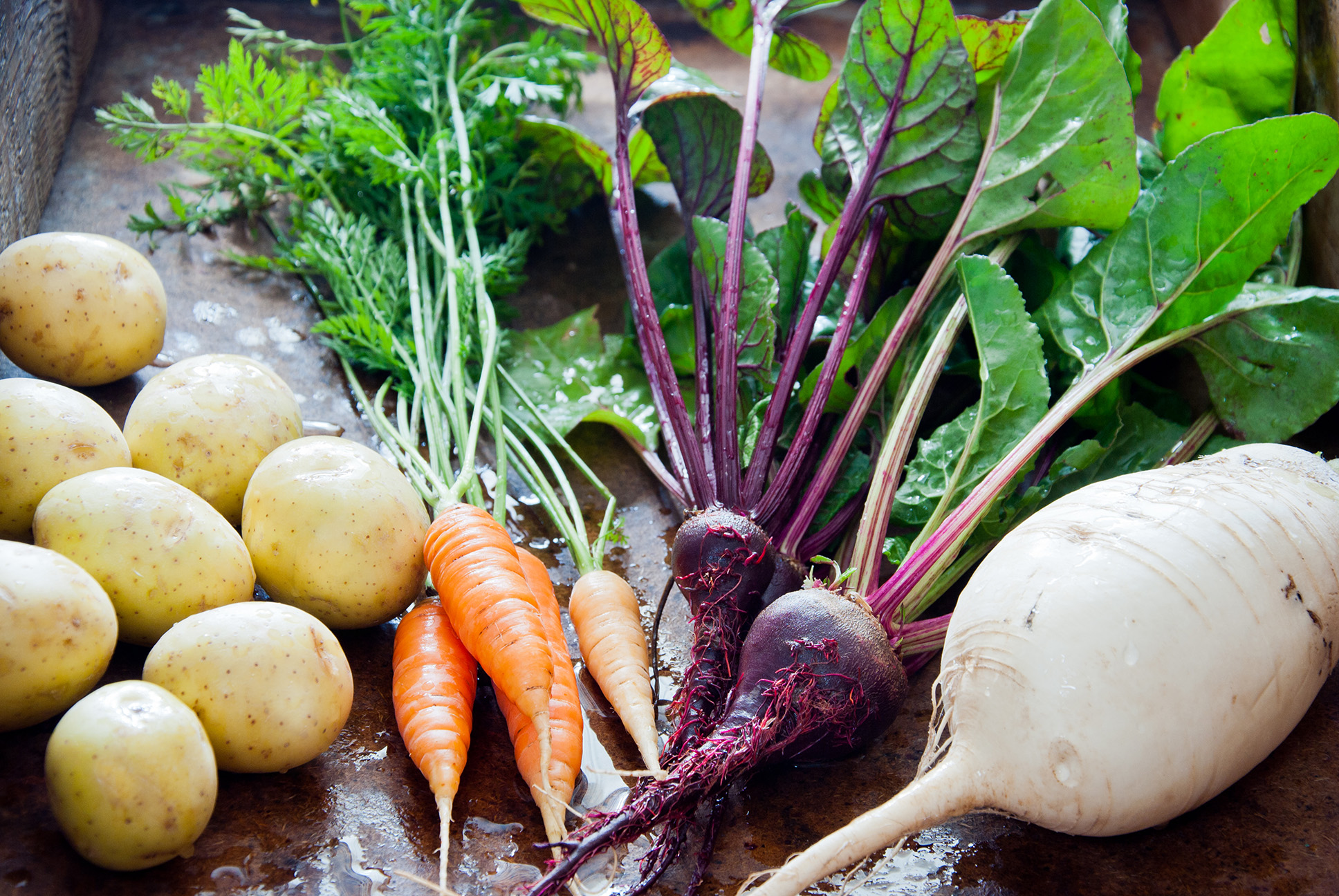Parsnip

Availability:
| J | F | M | A | M | J | J | A | S | O | N | D |
Description:
The parsnip (Pastinaca sativa) is not a carrot. It might look like a pale carrot, it might taste somewhat like a carrot, but it is not a carrot. The parsnip is a relative of the parsley family, and to look at the leaves, you will see the resemblance. However, they are usually sold commercially without leaves.
Parsnips are a root vegetable, which means they have one underground tap root and the greenery grows above ground. Root vegetables are sometimes lumped together with tubers, and while culinarily moot, there is a botanical difference. If you are like us, you “dig” details; click the link below to read our blog post.
When you think of parsnip, you think of a humble vegetable, but it does deserve attention on your menu! Parsnips are versatile and can be roasted, boiled, mashed, or pureed. The peelings can be fried and used as a crunchy, sweet garnish. You can swap parsnips for carrots in any recipe, and you may find them a good substitute for potatoes as well. Parsnip have a sweet, earthy flavor, and are a great, starchy grain-free option for some diet preferences.
Move over carrots!
Recommended Storage
The recommended optimum storage temperature is 32° – 40°F. While they are not chill sensitive, you don’t want to allow them to freeze, but keep them as cold as possible. Like carrots, you want to keep them covered, as they are susceptible to wilting when allowed to dehydrate–and like carrots, it happens quickly. We recommend you store them in the coldest part of your cooler. The temperature fluctuates from the front to the back of the cooler due to the location of the cooling unit and frequency of the door being opened. Download our PDF for more cooler storage hints.
Check out what’s going on this week. For our latest market update, please see The FreshPress.
You can also click here to be notified when we post fresh new videos.


